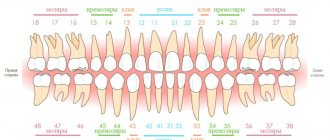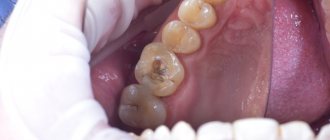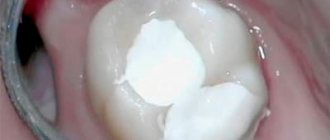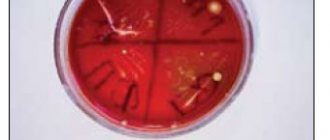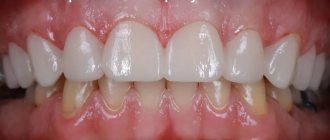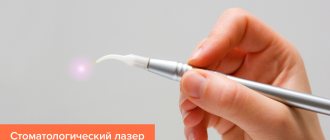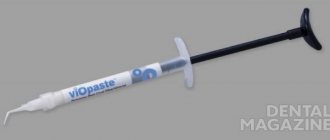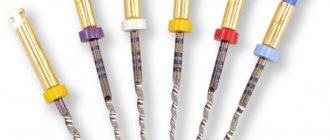Fillings made from a material such as a chemical composite mimic and replace natural tissue lost due to disease, subsequent treatment, or injury. Dentists use them to fill large cavities, including teeth with removed pulp. They are affordable and have excellent durability characteristics. Restoration using them will ensure full restoration of chewing function, and this despite the fact that it will serve for a long time!
Therapists at the CELT Dentistry Department widely use composite fillings to restore dental tissue. They have modern materials at their disposal, which, along with precise adherence to technology, make it possible to obtain beautiful, functional and durable restorations. Treatment is carried out on the basis of a contract with a guarantee. You can find out the cost of composite fillings in the price list by going to the “Services and prices” tab. Despite the fact that we regularly update it, we recommend that you check the numbers by contacting our information line operators or visiting a doctor.
Consultation with a dentist-therapist - 1,000 rubles.
Filling made of chemically cured composite—RUB 1,500.
At CELT you can get advice from a dental specialist.
- The cost of a consultation with a dentist-therapist is 1,000
Make an appointment
Types of fillings made of chemically cured composite
Chemical composite materials began to be used in dentistry in the 60s of the last century. Fillings made from it are called ordinary or cement. Their distinctive feature is that they crystallize due to a chemical reaction, which is launched during the process of mixing their components. They themselves are very durable, which can be called both an advantage and a disadvantage. The fact is that their hardness exceeds the hardness of dental tissues, which is why they wear out and the tooth itself is destroyed.
| Types of cement fillings | |
| View | Distinctive features |
| Composite | It includes several components, is characterized by uniform hardening, and lasts about twenty-four months. After hardening, its color may differ from the color of the enamel, so it is best to place it where it will not be visible (on the molar). |
| Glass ionomer | Manufacturing occurs by mixing an aqueous solution of polyacrylic acid and aluminofluorosilicate glass powder. The crystallization effect is achieved through an acid reaction. |
What is the difference between a light filling and a chemical filling?
The main difference between these two types of fillings is the curing method. A conventional (chemical) filling gains strength and is securely fixed in the installation area due to the chemical reaction that occurs between the components of the composite material. Photopolymer fillings become hard under the influence of ultraviolet radiation from a special lamp used by the dentist during tooth restoration.
Since the chemical reaction takes time to start and complete, conventional fillings harden more slowly compared to photopolymer restorations.
Features and advantages of composite fillings
The price of fillings made from a chemical composite is low: they are among the cheapest available today. This is due to the fact that they are unable to provide a good cosmetic result. At the same time, it is not required when it comes to molars: a darker color will not be a problem, but the structure itself will withstand intense loads during chewing and will last for many years. It contains fluoride, which will prevent the development of caries and destruction of tooth enamel.
Due to its excellent strength characteristics, the average service life of a conventional filling ranges from ten to fifteen years. However, it only depends 60% on the material of manufacture: an important factor in this case is regular and correct oral hygiene measures. Advantages of composite fillings:
- good strength characteristics, hardness;
- long service life;
- low price with simple application;
- high speed of restoration production;
- uniform hardening, regardless of the size and depth of the cavity;
- immunity to the effects of saliva;
- minimal risk of cracking of the filling.
Chemically cured composites are “powder-liquid” or “paste-paste” systems. The rate of their hardening depends on the number of active elements, temperature and the presence of inhibitors. Indications for installing a filling on a tooth made of a chemically cured composite:
- the need to obtain a hard, wear-resistant, durable restoration;
- restoration of a unit with a deep carious cavity;
- restoration of posterior chewing units;
- the patient's request to use budget materials.
Polymerization of composites
O.E. Khidirbegishvili, dentist, Georgia, Tbilisi
Composites are materials whose polymerization is initiated by free radicals that can be formed as a result of heating, as well as chemical and photochemical reactions. Initiation by heating has not been used recently due to certain inconveniences and the existence of more advanced techniques. Therefore, at present, depending on how the polymerization reaction is started, composite materials are divided into two groups: chemical and light curing. The definition of “chemically cured composites” is not inherently an absolutely correct term that would characterize their difference from light-cured ones, because in both cases, polymerization occurs due to a chemical reaction. The only difference is in the mechanism of activation of polymerization. In self-hardening composites, this is carried out by a chemical activator, and in light-curing composites, it is carried out by photon (light) energy.
The advantage of chemical activation is uniform polymerization, regardless of the depth of the cavity and the thickness of the filling. In addition, the undoubted advantages of self-hardening composites are the short time required, the relatively low cost of the material and the final filling product (filling, restoration, etc.).
Nowadays, chemically cured composites are used extremely rarely as a filling material. This is due to their serious disadvantages, determined by the principle of initiating polymerization. First of all, we are talking about the need to mix two components - the main component and the catalyst. In this case, pores and bubbles may appear, leading to a deterioration in the physical characteristics of the hardened filling. If mixing is incomplete, there may be inclusions of unpolymerized material inside the filling, which also negatively affect the stability and aesthetics of the filling. It is very difficult, almost impossible, to perform the technique of layer-by-layer (concrete) filling of the cavity and polymerization of the composite, which leads to significant shrinkage, especially in carious cavities with a C-factor higher than I.
Another disadvantage of chemically cured composites is that polymerization begins immediately after mixing the components, resulting in a change in the viscosity of the material during the filling process. If you “overstay” the time for introducing the material into the cavity, its properties will change. Such a limited time of working with chemically cured composites worsens the handling properties of the material and complicates the doctor’s work.
It is also important to note that after polymerization, as a rule, an activator (thermoamine) remains in the filling, which over time undergoes chemical transformations, as a result of which the color of the filling changes (the so-called “amine staining”). This is not a complete list of the shortcomings of chemically cured materials, due to which they were practically replaced by light-cured composites.
Light-curing composites are homogeneous, one-component materials packaged in syringes and capsules. They are supplied in a variety of color shades of varying intensities to achieve the desired aesthetic result.
Light-curing composites have a number of advantages over chemically curing composites (A.I. Nikolaev, L.M. Tsepov, 2001):
- do not require mixing components;
- do not change viscosity during operation;
- allow you to simulate a filling for a longer time;
- polymerization is carried out “on command” (i.e., according to the doctor’s decision);
- allow you to work “without waste”, i.e. take exactly as much material as needed;
- do not darken due to chemical transformations of their constituent components;
- light curing achieves a higher degree of polymerization;
- the use of light-curing materials improves the quality of the filling.
Disadvantages of light-curing composites:
- a large amount of time is spent when applying a filling made from these materials (when using light-curing composites, it takes 40-60 minutes to apply one filling, or more precisely, to treat one tooth for caries, and when using chemically cured materials – 25-30 minutes);
- the high cost of fillings made of photopolymers (the material itself is more expensive and the cost of the filling includes the cost of the activating lamp (a halogen lamp is designed for approximately 4000 cycles of 20 seconds each, i.e. for approximately 800 fillings);
- the lamp light is harmful to the eyes (the use of protective devices is required: a protective screen on the light guide, safety glasses).
It must be remembered that photopolymers have a limited application time. Slow cure can be initiated by sunlight or dental unit lights (especially if fitted with a halogen lamp), which can cause the material to harden prematurely, so they should be stored in packaging protected from light.
The initiator of polymerization of this group of materials is a special system, which consists of a photoinitiator and a catalyst, which is usually a tertiary amine. After light exposure of the photoinitiator to photons of a certain wavelength, radicals are released, which, together with the tertiary amine, cause polymerization. Obviously, light polymerization depends on the type of photoinitiator, its concentration and the wavelength at which it decays.
The originally used UV irradiations are no longer used, because they caused visual disturbances and had carcinogenic properties. Currently, the most widely used lamps are quinone-based lamps, which produce blue light. The high-intensity blue light required to initiate polymerization can be obtained in several ways, according to which there are 4 types of polymerization lamps (photon sources) designed to work with light-curing composites:
- Halogen lamps.
- Plasma lamps.
- Lasers.
- Diode lamps (LED).
In halogen lamps, light is emitted by a hot tungsten filament, passes through filters and, having reached the required wavelength, is emitted through the exit window. In plasma, the incandescent lamp is replaced by a plasma lamp.
Since the light intensity of plasma lamps is much higher than that of incandescent lamps, and since, due to the higher temperature in the plasma discharge, most of the thermal energy is converted into light radiation in the short-wave range of the spectrum (blue waves), the efficiency of such lamps is much higher.
Another method of producing light of the required wavelength is to use a laser. Since in this case the light of only the required length is generated, filters are not used. The undoubted advantage of this method is the absence of unproductive energy losses. All 100% of the light energy is spent on polymerization, while for plasma lamps this figure is no more than 10%. All types of lasers can be used as a light source, but in practice only diode lasers are used, since other types of lasers do not allow the production of compact installations, and, in addition, they are much more expensive.
Such lamps consume an extremely small amount of energy and can be used in a mobile version (without a power cable), which is an undoubted advantage from the point of view of ergonomics and hygiene (sterilization of electrical cables is very difficult).
The clinical use of lamps faces several problems, the main one being the fact that conventional lamps emit a lot of heat, which must be dissipated somehow. Despite the fact that the lamps are designed with a cooling circuit, they still remain too “hot”. If it is not possible to completely filter out thermal radiation, then during operation of the lamp the surgical field heats up. Therefore, plasma lamps can only be used for a short period of time, otherwise thermal necrosis of the pulp occurs. Diode lasers, on the contrary, produce so-called cold light. The time of use of lasers is limited only by the maximum energy of laser radiation.
There is an ongoing debate about what the maximum energy required for dental polymerization units is. The most powerful existing installations are capable of polymerizing layers 4.5 or 6 mm thick.
However, there is no need to use powerful lamps, because It is necessary to take measures to compensate for shrinkage when applying each layer of filling material separately. The argument in favor of the use of such lamps is based on the erroneous idea that the high polymerization rate achieved in this case reduces the amount of shrinkage. The use of powerful polymerization lamps is necessary only when polymerizing adhesives in the process of fixing ceramic restorations (for example, CEREC inlays), when it is necessary to ensure polymerization of the adhesive in the most remote areas of the cavity.
Research in recent years shows that by controlling light polymerization, it is possible to achieve a significant reduction in polymerization shrinkage and internal stresses in the filling.
Chemical-curing and light-curing materials polymerize differently. The polymerization reaction is accompanied by the release of free radicals, which combine with each other to form a three-dimensional polymer network. This reaction occurs slowly in chemically cured composites and much faster in light-curing materials. As is known, polymerization consists of two phases (Fig. 1). During the first, pregel phase of hardening (pregel), the composite is still pliable and the stress is compensated by deformation of the free surface of the filling. At the moment when the polymerization process exceeds point G, the second phase begins - the post-gel phase, during which the composite acquires rigidity, and stress compensation during polymerization shrinkage no longer occurs. Therefore, it is necessary to strive to extend the pre-gel phase, and often to the detriment of the post-gel phase. It should be noted that the shortest pre-gel phase is for light-curing composites, and the longest is for self-hardening composites.
Moreover, among self-hardening composites, amalgam has the longest pre-gel phase, because its complete hardening time is 24 hours and, as a result, there is a virtual absence of post-polymerization complications. Often the best solution, it would seem, is to use the principle of chemical initiation of polymerization, but these materials should not always be used, since they have a number of significant disadvantages.
Thus, the rate of polymerization also affects the stresses created. Therefore, the stress generated in a chemically cured material is less than in a light-cured material. That is why complications associated with polymerization shrinkage when using light-curing composites are characterized by a more acute course and an earlier onset.
Fig.1. Phases of polymerization of composites.
Currently, they are trying to extend the pre-gel phase in several ways:
- Using special polymerization lamps with a “soft start” (Soft-start polymerization), in which the intensity of the emitted light is initially very low (100-150 MW/cm2), but gradually increases to values of 700-800 MW/cm2. Lamps that provide extension of the pre-gel phase of polymerization can be divided into 3 groups in accordance with the principle used to increase the radiation intensity to a maximum value: a rapid increase in intensity (Elipar HighLight - ESPE, Degulux soft-start - Degussa), a gradual increase in intensity (Elipar TriLight - ESPE , Astralis 7-Ivoclar/Vivadent), prolonged increase in intensity (VIP-Bisco).
- Transdental illumination as the first stage of filling polymerization. In this case, the intensity of the emitted light weakens somewhat after passing through the dental tissues. However, in the second stage, the filling must always be exposed directly to direct, thorough radiation of sufficient intensity.
- A short light exposure from a greater distance (at a distance of 10 mm from the surface of the filling, the intensity is reduced by 50%), with an extension of 10 seconds, followed by completion of polymerization. However, this method is non-standard and therefore can only serve as a temporary or fallback option.
It should be remembered that increasing the degree of polymerization of the composite helps to increase its strength, so it is better to increase the time of exposure to light, especially with dark colors of the material. In this regard, the recommendation of A.Zh. Petrikas (1994) seems completely fair: “...overexposure is better than underexposure.”
In addition, it should be taken into account that during the irradiation of the composite with an activating lamp, polymerization occurs only by 50%, in the next 24 hours by another 40%, and by 120% within 7 days. It should also be taken into account that amalgam residues, metal pins, etc. form a shadow during irradiation, so in such cases it is advisable to irradiate fillings from two or three directions.
With the advent of composites on the market, the previous statement (Soviet intelligence officers were recognized by their teeth) lost its original meaning.
Reviews about our dental therapists
I would like to express my gratitude to the dentist Elena Nikolaevna Kiseleva and her assistant Svetlana - they are real specialists and at the same time sensitive, not burnt out by years of practice.
Thanks to them, I have been coming back here for many years. Thanks to the management for such doctors! Read full review Svetlana Nikolaevna
13.08.2021
Words cannot express my gratitude to Elena Nikolaevna Kiseleva. This is the best doctor in the world. I got an appointment after many years of being ignored by the dentist’s office and with a bitter experience of treatment in another paid clinic, the mistakes of which had to be corrected in the first visits. Thank you for this... Read full review
Roman Stanislavovich Sh
25.07.2020
Sealing
After the above-described list of preparatory measures, the doctor proceeds to actually filling the open hole in the tooth. This is where the creative stage of a dentist’s work begins, because teeth are individual – in color and shape. In an effort to maintain the attractiveness of a smile and ensure the strength of the affected tooth when chewing food, the doctor sculpturally lays the filling substrate in layers. Each layer is illuminated with ultraviolet light, a new layer is applied to the hardened area, and so on until the work is completed.
Differences between a filling made from a chemically cured composite and a filling made from a light-cured composite
The “light” filling got its name from the curing method: it occurs under the influence of a UV-radiation polymerization lamp. Thanks to him, the dentist has the opportunity to give it a certain shape as accurately as possible. After hardening, the material adheres as tightly as possible to the native dental tissues, without differing from them in color. For this reason, such structures are most often used on frontal teeth. Their service life is about five years.
| Differences between regular and “light” fillings | ||
| Parameter | Regular | "Light" |
| Polymerization method | As a result of starting a chemical reaction when mixing components | Under the influence of light emitted by an ultraviolet lamp |
| Application area | Premolars and molars | Smile zone teeth |
| Comfort of treatment | Preparation is a cause of discomfort | Minimal preparation |
| Price | Available | Higher |
| Material toxicity | May release toxins | Non-toxic |
| Color | As it hardens, it becomes darker in color. | Possibility of selection in accordance with the color of the native enamel |
What is the difference between a light filling and a chemical filling: the difference in price
Another difference between light fillings and chemical fillings is the price. Restorations made from photopolymers are more expensive because they have better aesthetics and a longer useful life. The type of filling should be chosen together with the treating dentist, so that only a specialist, having assessed the clinical situation, will be able to choose the optimal type of filling material for the patient.
You can receive high-quality dental treatment and restoration services by contacting our dentistry. We use modern filling materials and successfully restore patients’ teeth in the most difficult clinical cases!
Call us or 8 (926) 100-10-10
What determines the price of a chemical composite filling?
The cost of installation is calculated by the dentist after examination and diagnosis. It depends on:
- the degree of tooth decay and the need to use additional means (for example, linings for caries);
- area of location of the affected dental unit;
- pricing policy of the dental clinic and the level of qualification of the dentist.
You can make an appointment with CELT dentists online or by contacting our information line operators.
Make an appointment through the application or by calling +7 +7 We work every day:
- Monday—Friday: 8.00—20.00
- Saturday: 8.00–18.00
- Sunday is a day off
The nearest metro and MCC stations to the clinic:
- Highway of Enthusiasts or Perovo
- Partisan
- Enthusiast Highway
Driving directions
Contraindications
Composite materials are contraindicated if the patient has toxic or allergic reactions to polymers, as well as with bruxism and parafunction. Relative contraindications include increased abrasion of antagonist teeth, as well as the presence in the oral cavity of antagonist teeth covered with crowns made of noble alloys.
Composite materials are an ideal solution for restoring anterior teeth when aesthetics are a priority rather than strength requirements due to the low chewing load. They retain the original shade, have good adhesion and a low rate of recurrent dental damage. An important nuance is that over time they lose their initial relief, since they are constantly exposed to abrasive wear during chewing, brushing teeth and exposure to the erosive environment in the oral cavity.
Tempo – the success of temporary restorations
The Tempo line includes 2 composites: Tempofot - a light-curing material for temporary fillings and Tempokor - for the manufacture of temporary crowns, inlays, onlays, and bridges.
Tempofot
This light-curing composite is available in the form of a paste and is used as a temporary filling material for isolating cavities under an inlay or coating a drug in a tooth cavity. It contains DUDMA, fine filler, light-curing activators; stabilizers; technological additives providing optimal consistency; benzalkonium chloride, which has a bactericidal effect against bacteria and fungi of the genus Candida.
After curing, TempoFot paste acquires a hard-elastic state and sufficient strength. These properties, on the one hand, ensure the stability of the filling for the period of temporary filling and, at the same time, allow the material to be easily and without residue removed from the cavity. Tempofot is easy to use and can be easily applied into the cavity with a syringe. The material is transparent, has a light shade, therefore it is cured with a halogen or LED lamp to a great depth (5 mm in 30–40 seconds). After curing, it remains elastic - the remaining material is easily and simply removed from the cavity with a probe. Tempofot guarantees the tightness of the cavity and protection from microbial contamination and contamination by food debris.
Tempokor
This chemically cured composite material based on multifunctional methacrylates is used for the manufacture of temporary orthopedic structures: crowns, inlays, onlays, and bridges. Available in the form of 2 pastes - base and catalytic, which are mixed in equal quantities before use. Has 5 shades on the VITA scale (A2, A3, A3.5, B2, C2). It cures in 5–9 minutes without overheating the tooth tissue to form a durable material that does not release monomers. Characterized by high fracture strength and resistance to abrasive influences, it ensures precise edge fit. The material has excellent polishability and long-term color stability. The shape of the orthopedic structure made by Tempokor is easily adjusted with flowable composites. Filling the mold with the material and placing it in the oral cavity takes no more than 45 seconds, curing and removal from the oral cavity takes 45 seconds to 3 minutes, and complete curing and final processing lasts 7-9 minutes.
Reliable adhesion with Belabond
Belabond adhesives are available in two versions: light and chemical curing, each of which ensures a strong connection of composite restoration materials with hard tooth tissues.
The light-curing adhesive consists of methacrylate oligomers (HEMA, UDMA), polymerization activators and stabilizers. It is capable of forming chemical bonds with tooth tissues and forming retention polymer strands in dentinal tubules.
Available as a two-component (primer and adhesive) or one-component (requires pre-etching) system, as well as in the form of a self-etching adhesive. This form of Belabond adhesive does not require preliminary etching of the enamel and easily penetrates the surface “smeared” layer of dentin, partially dissolving it. Since the processes of conditioning and diffusion occur simultaneously, the infiltration of monomers exactly corresponds to the depth of demineralization of the hard tissues of the tooth.
Light-curing belabond adhesives provide strong adhesion and reliable marginal sealing, reducing the risk of recurrent bacterial infection. They can be used with any light-curing composite materials.
The VladMiVa company also offers Belabond chemical-curing adhesive. It contains methacrylate oligomers, polymerization activators and stabilizers. Available in the form of 2 liquids (base and catalytic), the kit also includes an etching gel. This adhesive has a high chemical affinity for both composite restorative materials and hard tooth tissues and ensures a reliable marginal seal.
Compofix - fixation master
Composite cement of dual (chemical and light) curing Kompofix is used for permanent fixation of orthopedic structures: metal and metal-ceramic crowns, stump inlays made of metal alloys, ceramics and composites, veneers made of porcelain and composites, bridges.
The basis of the material is methacrylate oligomers with the addition of finely dispersed modified filler.
Main properties of Kompofix:
- working time 2–2.5 minutes;
- curing time at a temperature of 37ºС – 4 minutes;
- curing time during photopolymerization – 40 s;
- film thickness – less than 25 microns;
- bending strength – 85 MPa.
Cement allows you to use the advantages of adhesive systems and obtain excellent aesthetic results when fixing non-metallic structures (crowns, inlays, onlays, veneers). It has sufficient transparency and optimal fluidity, which makes the process of placing a restoration convenient and comfortable for the doctor and patient. The adhesive system and silane included in its composition ensure a strong connection of the composite cement with the hard tissues of the tooth and the surface of orthopedic structures.
Armo - the highest strength of transparent fiberglass
The VladMiVa company offers dentists fiberglass materials:
intracanal radiopaque fiberglass pins Armodent and fiberglass Armosplint for splinting mobile teeth.
Armodent pins are used to restore and strengthen the tooth crown after endodontic treatment (it is recommended to use them immediately after pulp removal). They are made from woven fiberglass bonded with Bis-GMA and reinforced with pyrogenic silica. The pins create reliable support for the restoration, help redistribute mechanical loads, reducing the risk of tooth splitting. The chemical affinity of their oligomeric matrix to composite materials enhances adhesion and ensures the solidity of the orthopedic structure. It is important that the modulus of elasticity of Armodent pins is close to that of dentin. Pins with a diameter of 1, 1.2 and 1.4 mm are available.
The light transmittance of fiberglass allows the use of light-curing or dual-curing materials to secure the pins.
In addition, transparent fibers do not need to be masked when restoring teeth in aesthetically significant areas.
Armosplint fiberglass reinforcing tape is used for coronal and intracoronal fixation of moving teeth, ensuring tooth retention when consolidating the results of orthodontic treatment, and immobilizing a tooth in case of traumatic dislocation or subluxation. Armosplint can also be used when replacing dental defects using the direct method, restoring the coronal part of the tooth, manufacturing adhesive dentures and splinting structures using the indirect method (in a dental laboratory).
Flexible fiberglass adapts well to uneven tooth surfaces, so gentle preparation is sufficient at the preparatory stage. Fiberglass is compatible with any flowable composites, can be easily sanded off if accidentally exposed, is moisture resistant, and hypoallergenic (in most cases). Does not require special storage conditions, working with special gloves or using special tools. It can be cut with ordinary sharp scissors and will not unravel.
Varnish Axil LC – reliable protection of restorations
Protective light-curing varnish Axil LC is designed to protect fillings made of glass ionomer cements from moisture, eliminate minor defects and porosity on the surface of composite restorations. The material contains methacrylate oligomers, solvent, initiators and stabilizers. Axil LC has good adhesion to filling materials and quickly cures under the action of a photopolymerization lamp, forming a thin film. This film protects restorations from moisture and staining, increases their resistance to wear, and reduces the likelihood of microleakage. The unique composition of Axil LC allows you to obtain a smooth shiny surface without an inhibited layer.
Did you call Kaleidoscope? Or 2 words about fissure sealants
The VladMiVa company produces colored fissure sealants Fissulight-color and Fiskhim-color. They are used to seal fissures and other anatomical recesses of intact teeth. In addition to functional advantages, these materials are characterized by a wide range of bright colors, which will certainly help doctors arouse interest and gain the trust of young patients. The food colors used in their production comply with international standards and do not wash out of the sealant.
Fissulight-color is a light-curing, one-component, low-viscosity composite material. It is resistant to abrasion, contains components that release fluoride ions, which provide a preventive anti-caries effect. Available in paste form, which can be transparent with a shimmering effect, as well as white, gold, orange, blue, red or green. The included syringes with nozzles for direct injection provide convenient handling of the material and save time.
Fischem-color is a chemically curing sealant based on Bis-GMA, HEMA and silanized fine quartz filler. Contains fluoride components that provide a preventive effect. Available in the form of two pastes: base and catalytic, in four colors: yellow, green, blue, red.

